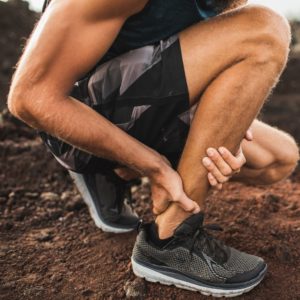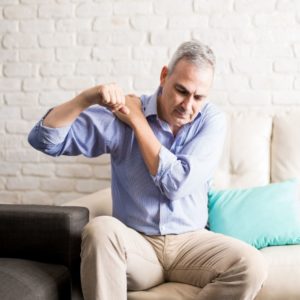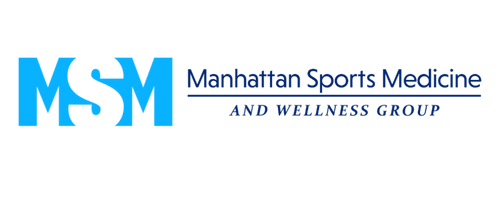Welcome To Manhattan Sports Medicine Physical Therapy near Wall Street
Manhattan Sports Medicine physical therapy near Wall Street is firmly rooted in collaborative care. We feel this is the future of healthcare, and for that reason we take great pride in offering a world class team of physicians to suit your every need. Our facilities are pleased to offer services in the range of chiropractic care, physical therapy, orthopedics, sports medicine/interventional pain management, acupuncture, Podiatry, functional breast reduction, medical massage and hyperbaric oxygen therapy. This collaborative effort, starting from the ground up, has yielded thousands of success stories spanning nearly two decades. Whether you are a top performing athlete or an individual seeking a more active, pain-free life lifestyle, Manhattan Sports Medicine And Wellness Group is your premier one stop shop for cutting edge healthcare.
Should I Stretch A Sore Achilles?
Do you feel pain in the calf muscle of your lower leg to your heel bone? You might have injured your Achilles. Achilles tendinitis most commonly happens to athletes such as runners, basketball players, etc. Most of the time, this injury can be treated at home but some might require surgical repair. If you are looking for physical therapy near Wall Street, Manhattan Sports Medicine and Wellness Group is perfect for you!
Causes of Achilles Tendinitis
Achilles Tendinitis is often caused by the intense use of the tendon. Athletes or middle-aged people are more susceptible to the injury as the tendon weakens with age.
Stretches
Stretching in moderation is recommended for people that have a sore Achilles to help strengthen and speed up the healing process. Some stretches include:
- Runner’s Stretch – Place your hand at eye level on the wall while putting the leg you want to stretch behind your other leg. Keep your back straight and bend the leg in front while also keeping the back leg straight. Lean forward against the wall until you feel a stretch in your back leg. Hold the stretch for 30 seconds and repeat on the other side if needed with a total of 3 reps.
- Toe-to-wall Stretch – Stand facing the wall and place your toes up and against the wall. Your other foot should be placed on the ground and behind the other foot. Lean forwards and you should feel a stretch in your calves. Hold for 30 seconds and repeat 3 times.
- Stair Stretch – Place your feet on the stairs with the balls of your feet off the stairs. You should hold onto the banister to keep your balance. Slowly let the balls of your feet go down while the front half of your feet are on the stairs. You should feel the stretch in your calves. Hold for 30 seconds and repeat 3 times.
Visit Physical Therapy Near Wall Street
This can be difficult for people to do without the help of others so if you’re looking for physical therapy near Wall Street, MSM Wellness will gladly help you with the healing process. The sooner the tendon is healed, the sooner you can go back into sports and your everyday life without being in pain. Schedule an appointment today!
Fill Out This Form For Physical Therapy Near Wall Street
How Long Does It Take An MCL Injury To Heal?

The MCL is a band of tissue on the inside of your knee which connects your thighbone to the bone in your lower leg. The MCL keeps your knee from bending inward. An MCL injury is a tear or sprain to the medial collateral ligament. At Manhattan Sports Medicine and Wellness Group, we treat medial Collateral Ligament (MCL) injuries. If you are interested in our physical therapy near Wall Street, click here to make an appointment.
Causes of MCL Injuries
MCL injuries usually occur when you are doing an activity that involves bending, twisting, a quick change of direction, or being hit from the side. MCL injuries are common and one of the most common knee ligament injuries. About 40% of all knee injuries include the MCL. This type of unjust is common in football, basketball, and soccer players. This can also occur in skiing or any other activity that includes many stop-and-go movements, jumping, or weaving.
Symptoms Of A Torn MCL
- Hearing a popping noise when the injury first happens
- Pain
- Stiffness
- Swelling
- Tenderness on the inside of your knee
- You can’t put pressure on it
- Feeling that your knee may give away under stress or may lock
While visiting the doctor for your MCL injury, they will scale the severity of your injury:
- Grade 1: some tenderness and pain
- Grade 2: major pain and tenderness, looseness in the knee when moved by hand, possible swelling
- Grade 3: pain and tenderness on the inside of your knee, swelling, joint instability
To diagnose an MCL injury, your doctor will have you take an x-ray and possibly an MRI in some cases.
After having your doctor rate your MCL injury’s severity, you will recommend physical therapy near Wall Street. If you have grade 1, you can start physical therapy three weeks after the injury, but if you are suffering from grade 2 or 3 levels injury, you must wait at least six weeks to begin physical therapy near Wall Street. Doing physical therapy after an MCL injury will help you return to your normal lifestyle, reduce pain and weakness, improve motion, strength, and balance.
MSM Wellness – Physical Therapy Near Wall Street
At Manhattan Sports Medicine and Wellness Group, we treat medial Collateral Ligament (MCL) injuries. If you are interested in our physical therapy near Wall Street, click here to make an appointment.
What Is A Ruptured Tendon?
Have you ever felt intense pain with a snap or pop? Maybe even sudden bruising of the affected area? This injury is known as a ruptured tendon. While these are common symptoms, there are a variety of symptoms associated with a specific injury. At Manhattan Sports Medicine, we provide the best physical therapy near Wall Street to ensure that you go back to your daily life.
What Is A Ruptured Tendon?
A tendon is a fibrous tissue that attaches your muscles to the bone. Intense force or pressure on your tendon is at least five times your weight causing a ruptured tendon. A ruptured tendon often occurs in 4 common areas:
- Quadriceps – This group of muscles extends your leg when you perform activities such as running or walking. This group is located above your kneecap.
- Achilles Tendon – This tendon helps you stand on your tiptoes or push with your feet. It is located at the back of your foot.
- Rotator Cuff – This group of muscles helps you raise your arm. It is located on the shoulder. A rotator cuff tear is one of the most common injuries.
- Biceps – This muscle helps you flex your elbow. You can get a proximal rupture (close) or distal rupture (far).
Causes Of A Ruptured Tendon?
A ruptured tendon predominantly occurs in older men, especially those with certain conditions. However, younger men are also at risk if intense pressure is applied. As you get older, your blood supply decreases, causing poor blood flow. Although there are general causes such as intense trauma, age, and muscle contraction, different causes depend on the area affected. This includes:
- Achilles Tendon – Strenuous activity causes trauma, especially a fall. This affects your tiptoes and pushing your feet.
- Quadriceps – Contraction of the muscles and trauma on the knee cause a quadricep ruptured tendon. This affects the extension of the leg.
- Rotator Cuff – Lifting a heavy object high up causes an outstretched hand. Therefore, intense pressure is applied. This affects moving your arm out to your sides.
- Biceps – Lifting heavy objects and forced flexing cause this rupture. This affects you from flexing your elbows and raising your arm.
Symptoms Of A Ruptured Tendon?
These causes are from general strenuous activity. It is important to know your symptoms to get proper physical therapy near Wall Street. Some symptoms include:
- Intense pain
- A snap or pop feeling
- Rapid bruising
- Sudden weakness
- Inability to use affected area
How Can Physical Therapy Help A Ruptured Tendon?
At Manhattan Sports Medicine, our physical therapy near Wall Street will help you manage your injury to learn how to gain proper function back. We will make a proper diagnosis based on physical examination through imaging such as X-rays and MRI. Depending on the area affected, we will determine what specific tests are done.
A specific physical therapy program will fit your required needs. It is important to be as mobile as you can. Some forms of treatment include: The Achilles tendon, quadriceps, and rotator cuff can heal without surgery.
- Achilles tendon – Holding the affected area in place is important so that the sole of your foot is pointed downward.
- Quadriceps – Partial tears of the quadricep can be treated without surgery by the area being put in a cast. Physical therapy might include exercises like quad sets and flexing your knees.
- Rotator Cuff – If surgery is needed, dead tissue is removed. However, shoulder muscles will be strengthened by exercise.
- Biceps – Range of motion activities are also taken into consideration.
MSM – Physical Therapy Near Wall Street
Taking care of your injuries is imperative as the risk of further damage is higher, especially with older age. At Manhattan Sports Medicine, we guarantee proper treatment to help you gain your life back. Contact us to schedule your physical therapy near Wall Street.
Why Does The Tendon Behind My Knee Hurt?
Pain behind the knee is one of the more difficult musculoskeletal issues to treat. There are numerous reasons, including muscle tears, tendon injury, nerve damage, and blood clots. Like with most other issues, the key to properly managing it is an early and precise diagnosis. At Manhattan Sports Medicine and Wellness Group, our ultimate goal is to reclaim control by educating you about your condition and, more importantly, how to prevent it from happening again. If you or someone you know is looking for physical therapy near Wall Street, give Manhattan Sports Medicine and Wellness Group a call.
What Is In The Back Of The Knee?
There are tendons from the thighs and calf that flow through this location and the middle knee joint. The vast hamstring muscles originate in the pelvis and travel across the knee to connect with the lower leg bones. The large Achilles tendon is formed by the huge calf muscles, which begin at the bottom of the thigh and cross the knee.
Tendon Pain Behind The Knee Has A Variety Of Causes
To confirm or rule out reasons, most physicians employ a systematic approach. First, they do a comprehensive examination of the joints, ligaments, and tendons that run across the back of the knee. Then, consider imagery to back up our assumptions. X-rays frequently reveal severe arthritis in the knee. Soft tissue disorders, such as tendinitis or muscle tears can be detected with an MRI. We may undertake additional testing such as blood tests, ultrasounds, or nerve examinations, depending on the condition.
Arthritis In The Knee
Arthritis usually generates bone spurs, which irritate the rear of the knee. The mobility of the knee joint is often tight and restricted. Working out and load management are the most effective treatments for knee arthritis. Putting a knee sleeve on can also help. At MSM Wellness, we provide physical therapy near Wall Street for arthritis in the knee.
Tears In The Meniscus At Physical Therapy near Wall Street
Meniscus tears are common when an athlete bends or spins their upper leg with their foot planted and knee bent. A discoid meniscus is a type of meniscus that develops into a block or disk form. A discoid meniscus tears more easily and is more common in children.
Contact MSM Wellness Physical Therapy near Wall Street Today!
The Manhattan Sports Medicine And Wellness Group is your one-stop shop for cutting-edge medical services. We want to ensure that our patients take the greatest possible steps toward pain relief. For more information on physical therapy near Wall Street, please make an appointment with us today!
MCL Exercises

If you have injured your medial collateral ligament (MCL), it can be excruciating and difficult to walk or even bend your knee. On the condition that it is a light injury, you may heal from rest and care on your own. However, if it is severe, it will require medical attention, and MSM Wellness is here to help! We are a physical therapy near Wall Street that can provide you with treatment for you to become your best self again!
One of the best ways to treat your MCL injury is through exercising to regain the strength back into your knee. Increasing blood flow allows the necessary oxygen, protein, and nutrients to flow through and repair the ligament. There are a variety of exercises that you can start with and work your way up. With exercising, people can typically heal within 5 to 7 weeks. Visit MSM Wellness Physical Therapy Near Wall Street today!
Common Exercises
- Straight Leg Raise – Start by laying on your back on a flat surface. Keep one leg straight and then bend the other, resting the feet on the ground. You want to squeeze your thigh as hard as possible and lift your straight leg and down slowly. By squeezing, you should feel the movement in your entire leg.
- Step Up – Place one leg on a step-up stool, and you want to pretend like you’re stepping onto the stool with your opposite leg, but instead of bringing it down, you want to bring it up to your waist. Then, you want to step back down onto the floor and repeat this motion.
- Side Step – You can use a resistance band if your knees can handle more pressure. Place the band on your upper thigh, and you want to bring your body down into almost a squat position. You will be walking from side to side but taking one step each. For example, take a step to the side with your right leg, and your left leg will also take a step and alternate to take a step to the left.
Physical Therapy Near Wall Street
These exercises are simple, but we know that it is not easy to do without any assistance, which is why MSM Wellness is here to help! As a physical therapy near Wall Street, we are easy to reach and find in the heart of Manhattan to bring you the best treatment possible. Contact us today to learn more about how we can help you!
How Do You Treat A Lumbar Strain?
What Is A Lumbar Sprain?
A lumbar sprain is essentially a series of muscles in the lower back, which hold the bones of your spinal column in place, and are strained. Tiny tears in the muscle tissue cause the muscles to weaken, leading to the spinal bones not being held in place correctly, which causes the spine to become less stable, causing lower back pain. The nerves in the lower back muscles can stretch from the spinal cord throughout the entire body and radiate pain to other back areas. If you need more inadequate back treatment, lower manhattan specialists from Manhattan Sports Medicine and Wellness Group can evaluate you and give you the treatment you deserve.
Causes of Lower Back Strains Include
- Slip and fall accidents
- Bending or crouching repeatedly
- Extreme physical exertion
- Poor form when lifting heavy objects or exercising
- Standing for extended periods
- Running and jogging
- Workplace injuries
Symptoms Of Lower Back Pain
- Pain, discomfort, and stiffness of the muscles in the back
- Pain from bending or stretching
- Difficulty standing or sitting for long periods
The symptoms of lower back strains can be very similar to more serious conditions. Seeking physical therapy near Wall Street from our experienced team of professionals is the first step to recovery. Symptoms of numbness or weakness in the legs, bowel issues, or tingling feelings from back spasms can be signs of nerve damage.
How To Treat Lower Back Strains
Most cases of lower back pain do heal on their own. Physical therapy near Wall Street can be beneficial to your overall health. You can do several things at home to speed up the recovery process or deem the severity of your injury. These include:
- Apply ice to the injured area – This reduces pain and swelling of the affected area or ices your back after physical exertion to prevent injury.
- Apply heat to the injured area – Relax the muscles after applying ice when the swelling has gone down.
- Take over-the-counter painkillers – Taking over-the-counter nonsteroidal anti-inflammatory drugs such as Aleve, Advil, etc., will help with pain and swelling.
- Seeking physical therapy near Wall Street – from our team of experts from Manhattan Sports Medicine and Wellness Group.
MSM Wellness – Physical Therapy near Wall Street
If you need lower back treatment, lower manhattan specialists from Manhattan Sports Medicine and Wellness Group can evaluate you and give you the treatment you deserve.
Causes of Shoulder Pain
The shoulder is a common point of pain, especially in athletes. There are many reasons why an athlete would experience shoulder pain, and it’s important to know the proper diagnosis and treatment for each type to prevent further injury and loss in flexibility and strength in the area. Look no further than Manhattan Sports Wellness physical therapy near Wall Street today!
Causes of Shoulder Injuries
Shoulder injuries can be classified into three categories: traumatic, overuse, and inflammatory.
- Traumatic – shoulder injuries can range from anything like dislocations or fractures to muscle strains in the deltoid, biceps, tricep, rotator cuff, or back of the shoulder joint. The most common traumatic injury is a rotator cuff tear. This is often caused by repetitive strain of an unbalanced shoulder muscle. Resulting in a more serious tear of the muscle and eventually bone. If the rotator cuff is torn completely, it will require extensive surgery to repair and may end that person’s career as an athlete.
- Overuse – can also be caused by not warming up and doing movements the body is not ready for. This results in microscopic tearing of tissue that causes inflammation and pain. If it becomes serious enough, surgery may be required to free the shoulder joint from surrounding scar tissue formation.
- Inflammatory – shoulder injuries are much less common than the two prior types of injuries. Inflammatory shoulder problems arise due to an infection or inflammation in the tissue surrounding the shoulder joint. This inflammatory process can cause pain, redness, heat, swelling, and loss of function.
Shoulder pain can also be attributed to conditions such as nerve impingements or pinched nerves. If the shoulder is not moving properly, this can also cause pain, loss of range of motion and function, and muscle atrophy. General symptoms of these injuries are similar, but it is important to know the difference between them so proper treatment may be administered. However, it is equally important to know if an injury is more serious than the usual overuse or trauma.
Manhattan Sports Medicine – Physical Therapy Near Wall Street
In conclusion, there are many reasons why an athlete may experience shoulder pain. It’s important to know the proper diagnosis and treatment for each type to prevent further injury and loss of flexibility and strength in the area. Please visit Manhattan Sports Wellness physical therapy near Wall Street to learn more about shoulder pain!


